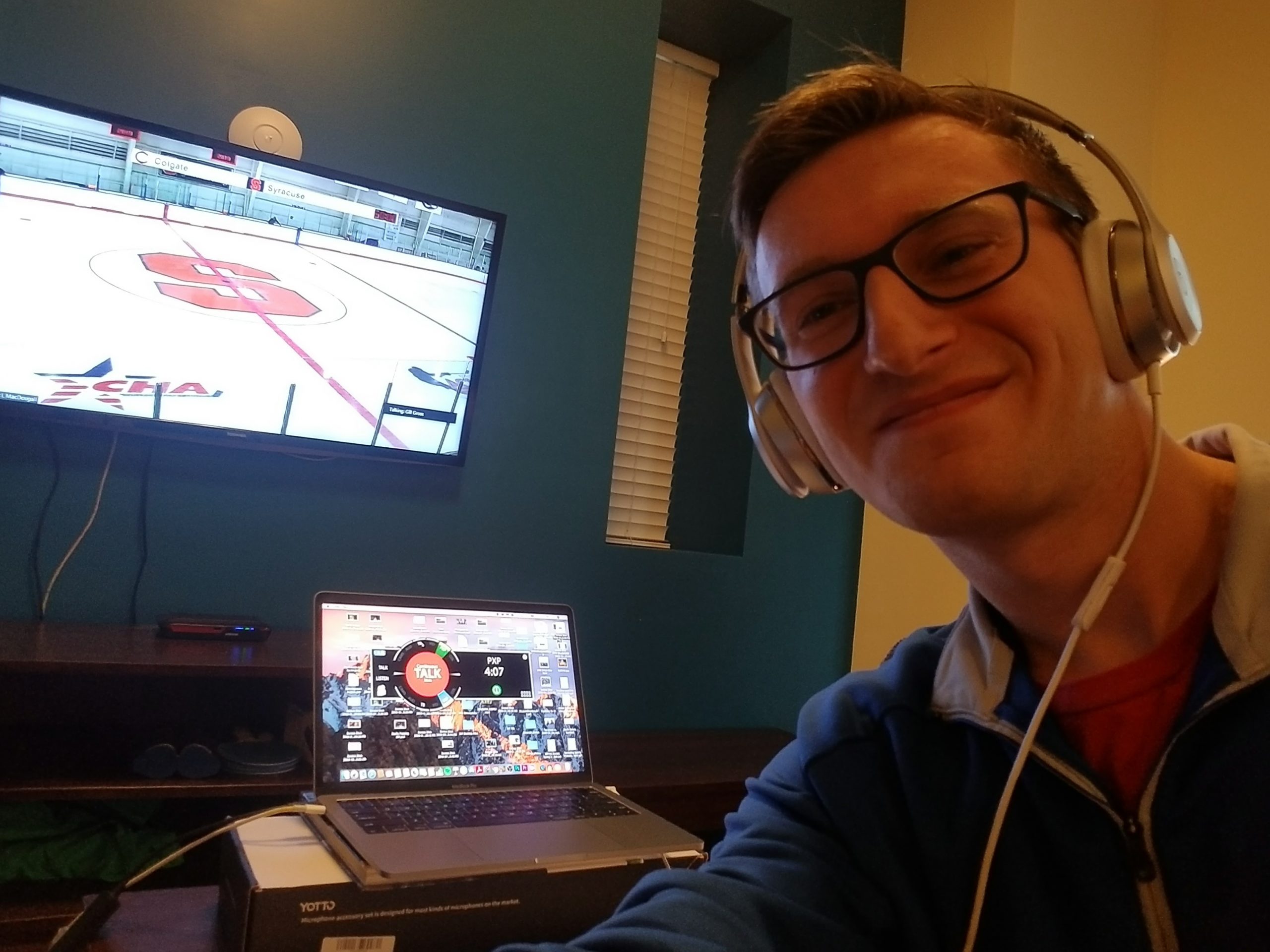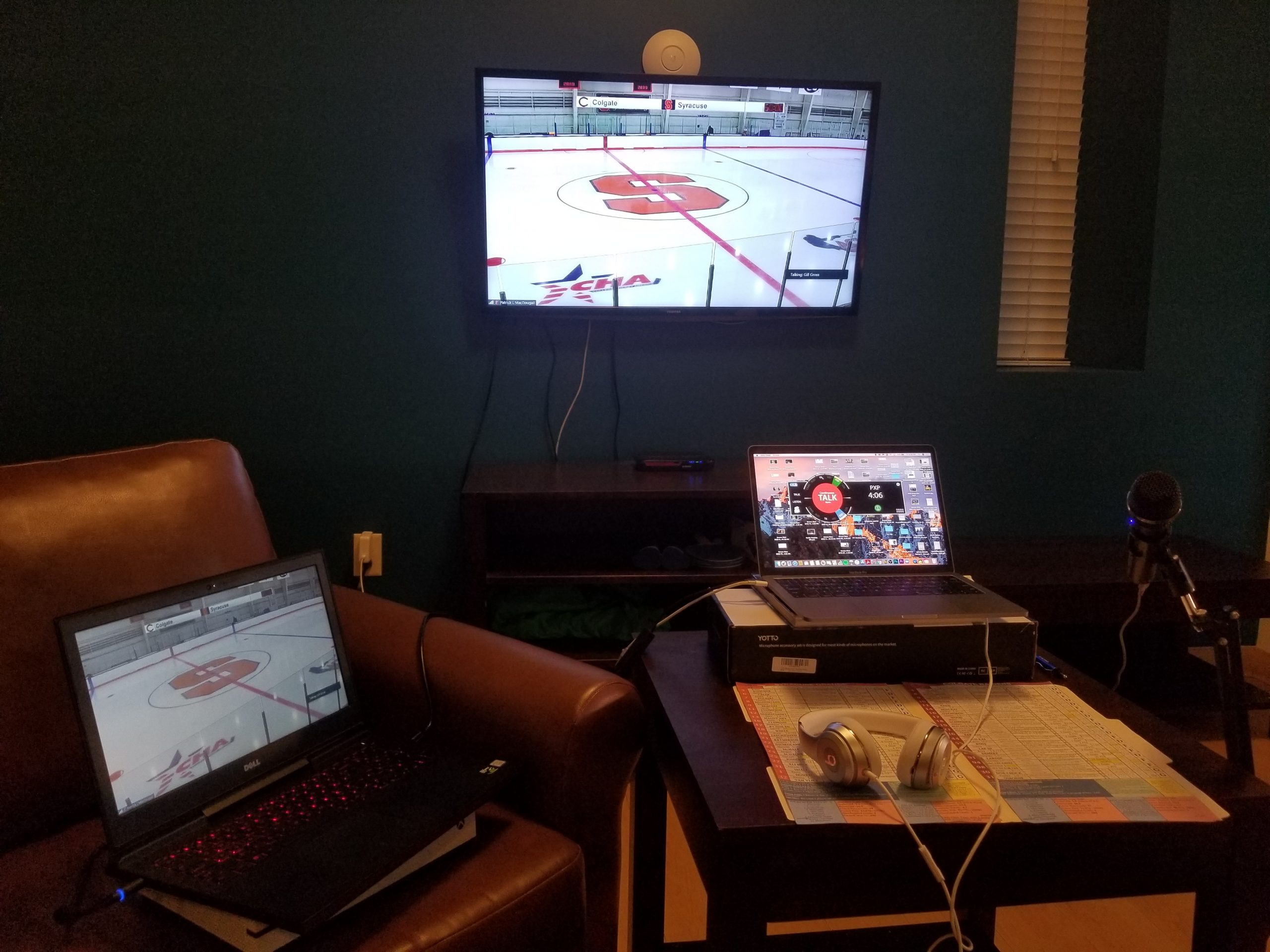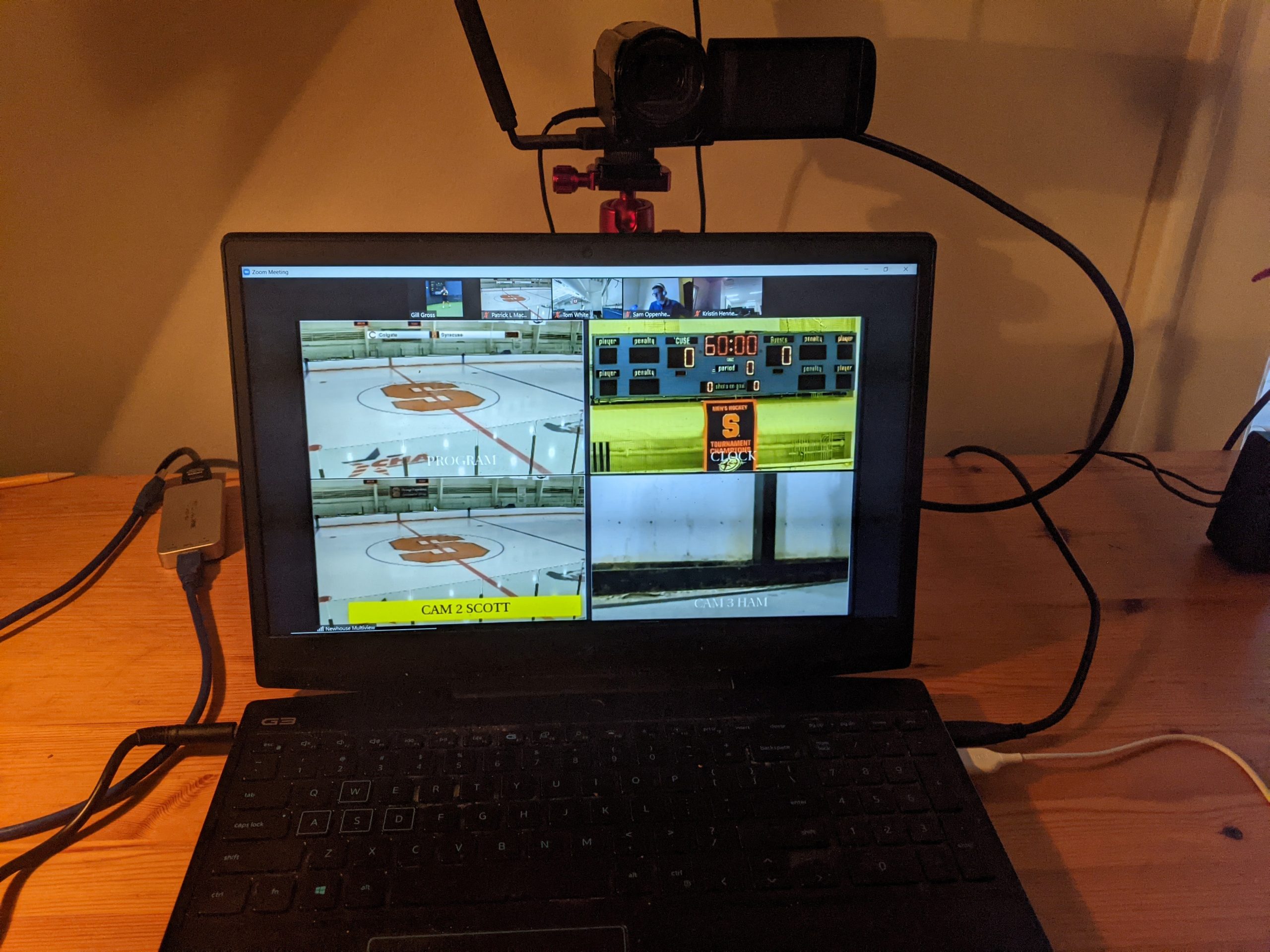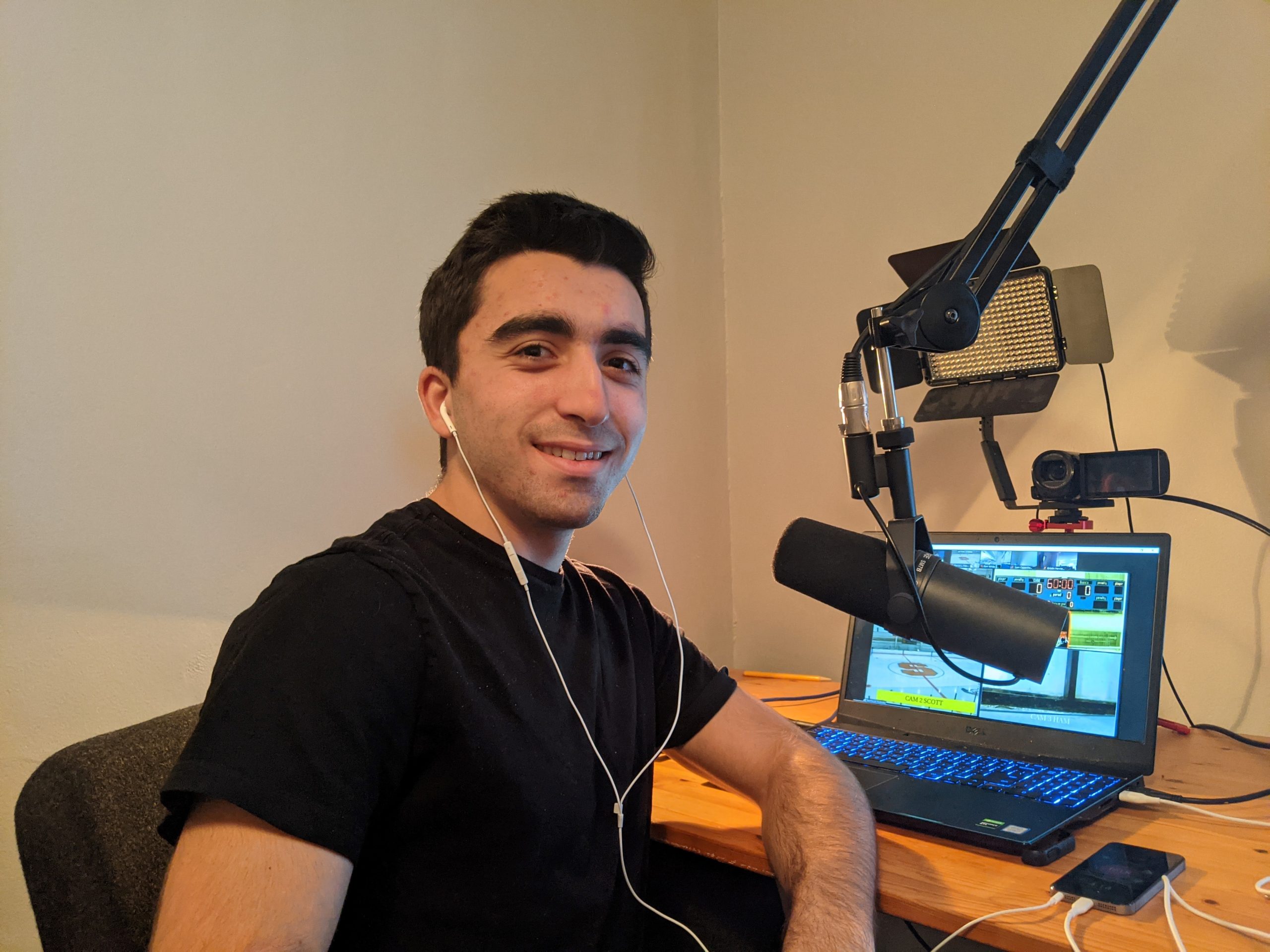How Syracuse University Students Call Digital-Only Games From the Comfort of Home
The athletics program is using Zoom to send camera feeds to talent
Story Highlights
Around the nation, professional broadcasters are adapting to the need to remotely call games from offsite locations. In the college ranks, Syracuse University is taking a play out of the networks’ playbook, constructing an infrastructure that allows students to provide play-by-play commentary and analysis for digital-only games from their respective homes.
“We rely on students to call our digital-tier telecasts,” says Scott Hecht, executive producer/director, Syracuse University, “but their safety is our top priority. We’ve created our own method to continue to televise games and develop the announcing skills of our students.”
Dealing With Changes: As Pandemic Lingers, Athletics Program Devises a New Plan
Despite the hopes that the COVID-19 pandemic would subside by the beginning of the 2020-21 academic year, the institution decided to suspend in-person classes for the remainder of the fall semester after initially inviting students to return to campus. With the general student population leaving the campus, the athletics program was losing a good chunk of its on-air talent. Hecht and Broadcast Engineer Tom White were forced to rethink their strategy and execution of live productions.

Play-by-play commentator Sam Oppenheim sits at his desk to call last Friday night’s women’s ice hockey game between Syracuse and Colgate University.
“COVID-19 makes things a little more difficult for people to come back to call games,” says Hecht. “We saw the need to stretch our resources and try to find a way to do this. Tom, who always rises to these types of challenges, was able to come up with an idea and how to do it.”
For televised football broadcasts, the program worked closely with ESPN in an effort to allow professional talent to call the games remotely. After producing more than two games, Hecht harkened back to this pre-existing plan and replicated the system to have students call games that run on the university’s digital platforms.
“Last week, we picked six announcers that we wanted to take this to the next level, and Tom went through the process with them,” says Hecht. “We conducted some tests with their computer setups and were able to make it work.”
Bedroom Banter: Inside a Student’s At-Home Broadcast Setup
On a basic level, the setup includes a microphone, a computer or phone, a headset, a video-conferencing platform, and the student’s knowledge of sports. At Syracuse University, the creative juices are always flowing. Whether inside or outside the brick-and-mortar classroom, aspiring broadcasters and journalists are busy producing podcasts or honing their craft with constant practice.

Sam Oppenheim’s computer features the Unity Intercom system used to communicate with the control room.
Since the students are pursuing other projects on their own, the program didn’t have to send industry-grade equipment to their homes. Although this saved a logistical step, the challenge came in harmonizing the workflows of students who use different types of devices.
“Students are doing their own podcasts, so, luckily, they’re all kind of set up with decent equipment,” says White. “The challenge was that everyone has different equipment because one kid has a Google Pixel, another two of have iPhones, and another has an Android.”
On a more complex level, the setup requires real-time feeds returning to the home of each student, audio integration with the control room, and a simple way of communicating with the broadcast team with miles of separation in between.
“We’re using Unity Intercom and an Apple Mac Mini server sitting in our equipment room,” he adds. “The server is integrated into our Dante infrastructure, and, through an app on their phone, we’re able to take their audio directly and route it to a channel out on the audio console. As far as IFB goes, we route that from our RTS audio system.”
As for video, footage is sent through a capture device and fed through a Zoom call. The Zoom call also hosts camera feeds of the game clock and other important angles of the field of play that helps the students tell the game in a better way.
Back on Campus: Onsite Staff Handles Cameras, Graphics, Replay in Newhouse Control Room
The system was first put into action for the women’s ice hockey game vs. Colgate University on Friday, Nov. 20 at Tennity Ice Pavilion. Although the students provide color to the broadcasts, Hecht, White, and his crew are still handling operations onsite. In the arena, camera operators are positioned to handle the footage, and, inside the S.I. Newhouse School of Public Communications building, duties like graphics and replay are fulfilled by the onsite staff in the control room.
Hecht is at the helm as the show’s director and Kristin Hennessey is working as the show’s producer for both linear and digital-only games. For these digital productions, the shows are scaled down a bit since the technology and equipment are fully funded by the university.
“It’s a little bit watered down from the capabilities that ESPN has because they can invest more money into it,” says Hecht. “In the end, [the broadcasts] will function pretty much the same exact way that ESPN is doing their shows.”
Endless Possibilities: Productions Open the Door for Future Projects
While the pandemic continues to disrupt the pace of daily life, a positive is that these students are learning to adapt to on-the-fly, learn-as-you-go scenarios that come with live event production. The quick thinking of Hecht and White gives the athletics program more bandwidth and more chances to call games in the future, including away games.

Gil Gross’s Zoom call was filled with live camera feeds and the game clock from Tennity Ice Pavilion.
“I think this is going to open up our productions,” says Hecht. “[For example], schools may collaborate a lot more, or a school doesn’t have available announcers to call a game but has the facilities to handle the production. [Our setup] presents opportunities to produce more telecasts.”
Even when sports return to normal, professional sports may continue with remote talent. In that case, Syracuse students will be perfectly groomed for the job.
“I can’t see this model going away anytime soon,” Hecht opines. “We live in a different world now, and, moving forward, we feel that our students are going to be more experienced when they walk out of the door here.”

